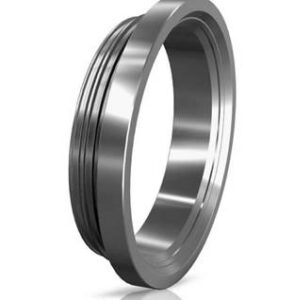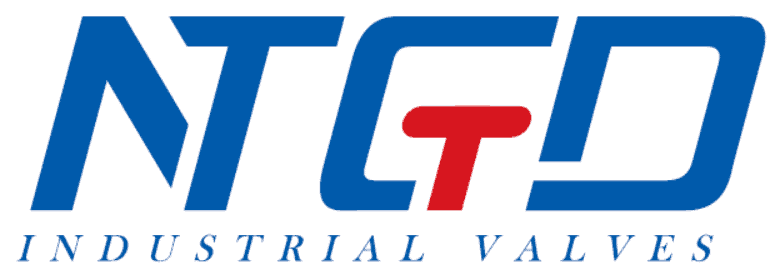Metal Seated Ball Valve
Metal Seated Ball Valve
※ Size Range: 2″-36″
※ Class Range: 150LB-2500LB
※ Fire Safe Design
※ Anti Static
※ Anti blow-out
※ Metal Seat Ball Valve Manufacturer
Introduction
Ball valves are strong and continue to function well even after several running cycles even in muddy and corrosive environments with high differential pressures. One benefit of using ball valves in cut-off applications is their consistent, tight shutting despite extended periods of inactivity. A ball-shaped component is employed, as the name would imply, to regulate the media flow. An open ball valve behaves like a piece of pipe and causes little to no obstruction to flow when it is in the open position. The valve closes entirely when the ball is turned 90 degrees in a clockwise direction. The ball’s bore and high inherent characteristics can be used to regulate large amounts of fluid with minimal energy wastage. In control operations, ball bores could also be provided with noise and cavitation reducing components without losing flow capacity.
Different varieties of ball valves, including metal seated ball valves and soft-seated ball valves in both automatic and manual configurations, are available based on the industrial process, usage, and flow medium. To guarantee process compliance and long-lasting, consistent functioning, metal seated ball valve manufacturer provides a variety of structures, coatings, and methods to eliminate noise and cavitation are offered.
General purpose ball valve seats are often made of non-metal materials like PTFE. The general purpose ball valve cannot be utilized in applications involving high temperatures, media containing solid particles, or solid residues due to limitations imposed by the seat material. As a result, the general purpose ball valve’s application range is rather constrained. In light of this, Metal Seated Ball Valve Manufacturers have skilfully designed a full range of metal to metal sealed ball valves, including floating ball valves and trunnion ball valves, after years of intensive research. These valves have found numerous applications in the oil and gas, chemical engineering, power, metallurgy, and light industry sectors.

What is a Metal Seated Ball Valve?
Ball valve seats need to be dependable and strong, whether they are used in a petroleum industry where a leak might have catastrophic environmental effects or in a pharmaceutical facility where purity and hygienic conditions are essential. A ball valve is made up of the valve body, bonnet, stem, spherical ball, and ball valve seat.
The fluid flowing through the ball valve must be sealed, and the seating tension must be distributed evenly, by the ball valve seat. Thermoplastic materials, like PTFE, are typically used to make soft seats. They work well in situations where the tightest seal and chemical compatibility are crucial.
However, dirty or coarse process fluids should not be used with soft seats. Soft seats may degrade under these circumstances, resulting in leaks. Ball valves with metal seats were first designed to overcome the drawbacks of their soft-seated predecessors. They are good choices to be used in refineries, chemical industries, mineral extraction, paper mills, steel plants, power generation plants, and water treatment facilities because they can withstand harsh operating conditions like extreme heat, cryogenic situations, abrasive types of media, slurries, and flow control.
When using a metal seated ball valve, the seat ring and ball are carefully manufactured, coated with a high velocity oxygen fuel coating process, and lapping is done to match the ball, forming a positive seal for bubble-tight operation. Trunnion ball valves with metal seating provide a number of benefits, including stability under pressure, tight shut-off, seamless controls, low torque, and good resistance against wear and corrosion. Even in the most demanding applications, metal seated ball valves offer extended service lives, exceptional fugitive emissions performance, and low operating torques.
Types & Working: Metal Seated Ball Valve.

Metal-seated ball valves come in two- or three-piece configurations, depending on their required size. It can have a floating ball or a ball positioned on a trunnion, both of which have differences in the mounting of the ball and the way the seats seal against the ball.
A trunnion valve’s ball is mechanically attached at the top and bottom, and the inlet seat is pushed against the ball by a spring arrangement and stream pressure. When there is no or little pressure difference, the spring in a trunnion-mounted valve seal maintains the seat to the valve face throughout the rotation. The fluid’s pressure pushing the seat up against the ball face produces the sealing force. Typically, larger, and superior pressure valves use this style.
A floating ball valve, in comparison, has a simpler design since the ball is free to move and isn’t attached to the valve by a trunnion inside the body. It moves toward the discharge side under the pressure of the line and presses firmly on the seat to create a seal. Floating ball valves are mostly utilized in middle- or low-pressure applications despite having strong sealing capabilities. The reason why floating ball valve diameters rarely exceed six inches is that a floating ball may place significant stress on the seat.
To meet the demands of a particular application, Metal seated ball valve manufacturers provide a wide range of offerings, including valve materials, seat materials, surface coating, and mechanical design. Metal-seated ball valves can be pricey up front, but when the cost of downtime is taken into account, they may end up being a wise investment.
Construction: Metal Seated Ball Valve.
Protective hard coatings are necessary for extreme
Features & Benefits: Metal Seated Ball Valve.
- The metal seat ring and ball come into full contact with one another.
- When soft seated valves cannot be utilized because of temperature restrictions, metal seated ball valves are used for abrasive duty.
- In order to increase wear tolerance and reduce abrasion from solid particles found in the process medium, the ball and seat contact surfaces are provided with hard faces.
- Tungsten carbide coating (up to 200 degrees Celsius), chromium carbide coating (over 200 degrees Celsius), electroless nickel plating (ENP), or stellite hard facing can all be used to treat metals.
- In comparison to soft seals under pressure, metal seats do not bed in as easily. So, it is necessary to carefully mill the ball and sealing rings.
- Ball valves with metal seats are vulnerable to intercrystallite corrosion, stress corrosion cracking, fretting, and pitting damage.
Technical Specification: Metal Seated Ball Valve.
- Size Range : NPS 1/2 to NPS 10
- Temperature Range : -196 °C to 540 °C
- Design Standards : ANSI/AWWA C507, API 6D, API 608, ASME B16.34, MSS SP-72
- Pressure Range : ASME Class 150 to Class 2500
- Body Material : Carbon Steel (WCB), and Stainless Steel (CF8M)
- Ball Material : Stainless Steel (CF8M)
- End Connections : BS 12760, ASME B16.5, ASME B16.47, API 605, MSS SP-44
Application: Metal Seated Ball Valve.
Ball valve assemblies with metal seats include a metal-to-metal seal between the seat and the ball. They are designed to withstand extreme abrasive, erosive, high-temperature, or high-pressure environments. As they enable tight shutdown in demanding service applications, metal-seated ball valves are frequently employed for uni- or bi-directional controlling in addition to isolation. They follow ANSI Class IV leakage requirements, which allow for a maximum leakage of 0.01% of the entire open valve capability. For this classification, the test pressure must be between 45 and 60 psi. The leakage rate might be more than 0.01% if the system pressure is much larger.
If a metal-seated ball valve is intended for use with abrasive or high temperatures, the design of the seats and coatings will play a significant role in this decision. Some seats include elastomer insert components that can break down and leak in heated environments. The majority of elastomer seals can withstand temperatures up to 220° C (450° F). The temperature may be raised to 315° C (600° F) using other choices such as Teflon seats packed with metal powder or similar materials. Full metal seats with hard coatings can be utilized to provide heat resistance up to 815° C (1500° F) or if more heat resistance is required, especially with any substantial pressure.
A metal seated ball valve of various pressure classes can be used to cut off or pass through any media in any pipeline. This should be done in accordance with choosing various materials for use in various mediums, including non-corrosive, weakly corrosive, nitric acid, acetic acid, oxidizing medium, urea, and other media. It is particularly appropriate for use in media that contain solid particles, such as slurry, powdered coal, ash, and other harsh working conditions. The many modes of action include manual, transmission, pneumatic, electric, and hydraulic actuators. In addition to using flange Ends, Metal seated Ball Valves may also be used with Butt Welded Ends, Socket Weld Ends, NPT Ends, and wafer Ends.
Summary: Metal Seated Ball Valve.
The ball valve has been widely utilized because of its modest fluid resistance, smooth flow channel, quick opening and shutting, and simple automated control. PTFE and other nonmetal materials are typically used for the seat of ordinary ball valves.
Regular valves cannot be utilized in high temperature service conditions due to limitations in seat seal materials. As a result, there are certain restrictions on the usage of standard ball valves. In order to address the aforementioned issue, a series of new style practical metal seated ball valve products were developed, and these products are now extensively used in the oil and gas, pharmaceutical, power production, metallurgy, light industry, and other industries. Metal seated ball valves are used to isolate or transfer media in various pipelines. It is also appropriate to be used in harsh service environments with solid particles, slurry, coal powder, cinder, and other materials.
We appreciate your time and hope you find this post educational if you are reading it.
Contact us if you have any questions about the metal seated ball valves or any other products. You are welcome to leave a remark and let us know what you think of our offerings.

